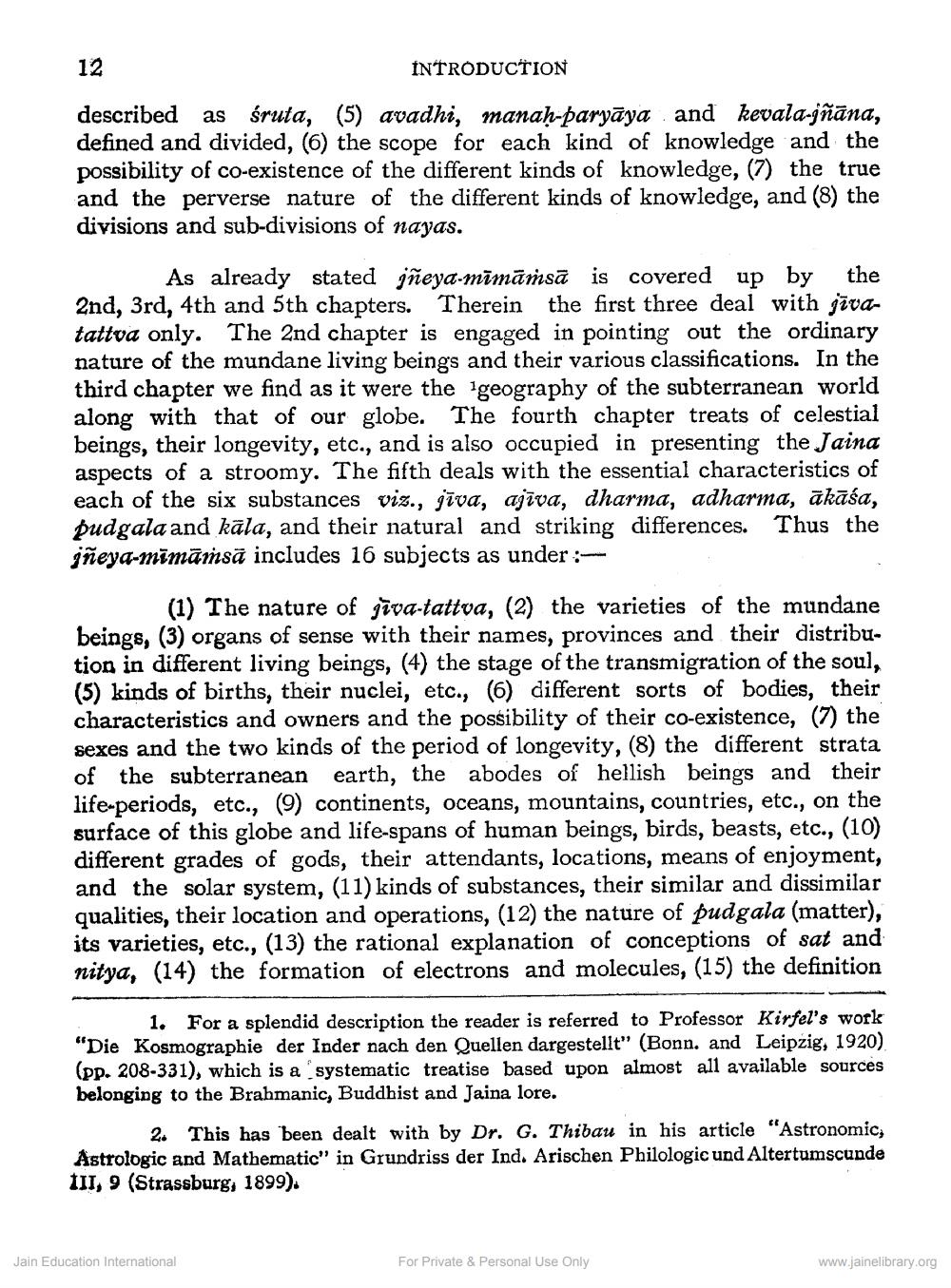________________
12
INTRODUCTION
described as śruta, (5) avadhi, manah-paryāya and kevala-jñāna, defined and divided, (6) the scope for each kind of knowledge and the possibility of co-existence of the different kinds of knowledge, (7) the true and the perverse nature of the different kinds of knowledge, and (8) the divisions and sub-divisions of nayas.
As already stated iñeya-mīmāmsā is covered up by the 2nd, 3rd, 4th and 5th chapters. Therein the first three deal with jīvatattva only. The 2nd chapter is engaged in pointing out the ordinary nature of the mundane living beings and their various classifications. In the third chapter we find as it were the geography of the subterranean world
long with that of our globe. The fourth chapter treats of celestial beings, their longevity, etc., and is also occupied in presenting the Jaina aspects of a stroomy. The fifth deals with the essential characteristics of each of the six substances viz., jīva, ajīva, dharma, adharma, ākāśa, pudgala and kāla, and their natural and striking differences. Thus the jñeya-mīmāṁsā includes 16 subjects as under :
(1) The nature of jīva-tattva, (2) the varieties of the mundane beings, (3) organs of sense with their names, provinces and their distribution in different living beings, (4) the stage of the transmigration of the soul,
inds of births, their nuclei, etc., (6) different sorts of bodies, their characteristics and owners and the possibility of their co-existence, (7) the sexes and the two kinds of the period of longevity, (8) the different strata of the subterranean earth, the abodes of hellish beings and their life-periods, etc., (9) continents, oceans, mountains, countries, etc., on the surface of this globe and life-spans of human beings, birds, beasts, etc., (10) different grades of gods, their attendants, locations, means of enjoyment, and the solar system, (11) kinds of substances, their similar and dissimilar qualities, their location and operations, (12) the nature of pudgala (matter), its varieties, etc., (13) the rational explanation of conceptions of sat and nitya, (14) the formation of electrons and molecules, (15) the definition
1. For a splendid description the reader is referred to Professor Kirfel's work "Die Kosmographie der Inder nach den Quellen dargestellt" (Bonn. and Leipzig, 1920) (pp. 208-331), which is a systematic treatise based upon almost all available sources belonging to the Brahmanic, Buddhist and Jaina lore.
2. This has been dealt with by Dr. G. Thibau in his article "Astronomic, Astrologic and Mathematic" in Grundriss der Ind. Arischen Philologic und Altertumscunde III, 9 (Strassburg, 1899).
Jain Education International
For Private & Personal Use Only
www.jainelibrary.org




